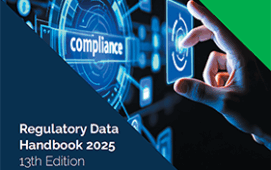Following the publication of the International Accounting Standards Board’s (IASB) discussion paper on Credit Risk in Liability Measurement in June, the European Financial Reporting Advisory Group (EFRAG) has published a comment letter on the IASB’s proposals. In turn, this has prompted the Committee of European Securities Regulators (CESR) to publish a response to the concerns raised by the EFRAG letter.
The original IASB proposals include suggestions to improve the measurement of risk within financial institutions by incorporating credit risk into the mix. The paper has proved controversial because it discusses whether current measurements of liabilities (including fair value) should incorporate the chance that an entity will fail to perform as required. It outlines three arguments for the inclusion of credit risk in liability measurement and three against the idea (the full paper is available for download below).
The arguments in favour of incorporating credit risk include: consistency at the initial measurement of liability; the fact that a change in credit risk results in wealth transfer; and that a failure to include changes in the credit risk of liabilities can result in an accounting mismatch between asset and liability measurements. On the other hand, the arguments against the idea include: the fact that incorporating credit risk may produce counter-intuitive results (where an entity reports a gain from a decline in the credit quality of its liabilities); inclusion can also cause accounting mismatches (as well as eliminating them); and realisation is not a critical event in accounting for some assets.
EFRAG’s response to the discussion paper was to indicate its conclusion that credit risk should only be included in certain circumstances. “Own credit risk should only be taken into account in the initial measurement of a liability if own credit risk is priced into the transaction that gave rise to the initial recognition of a liability. In all other circumstances it should not be included. Changes in own credit risk should not be taken into account in subsequent measurements of liabilities,” the letter, penned by EFRAG chairman Stig Enevoldsen, states.
CESR supports this statement, according to its own response, and is keen for the inclusion of credit risk but only in certain circumstances in order to reflect the fair value of a firm’s assets and liabilities. It does, however, unlike EFRAG, contend that credit risk may be needed in some subsequent measurements: “We believe there is such a case to incorporate changes in own credit risk in the subsequent measurement when an entity is able to buy back its own liability and when the liability is in the form of a debt instrument traded in an active market with observable listed prices.”
The discussion paper and its responses will be used as input for the various revisions of the IASB’s recently published exposure draft on Fair Value Measurement, which is open for comment until 28 September. The International Financial Reporting Standards (IFRS) in the exposure draft are aimed at improving fair value measurement in the market, post-crisis. It covers the whole remit of issues related to fair value measurement, including new definitions of level 1-3 inputs for valuations data.
Subscribe to our newsletter




